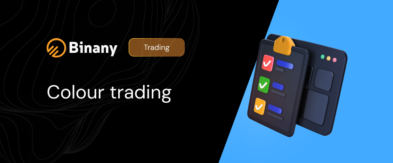What is online trading?
In its simplest form, online trading involves buying and selling financial instruments using a trading platform provided by online brokers. These platforms serve as gateways to financial markets, where traders can execute buy or sell orders for assets such as stocks, commodities, currencies, and derivatives.

The primary appeal of online trading lies in its accessibility; with a computer or a smartphone and internet connection, virtually anyone can participate in global markets. Online trading can be pursued as a full-time profession, a part-time hobby, or for diversifying one’s investment portfolio. However, it is essential to recognize that while online trading provides significant opportunities, it also carries inherent risks that require understanding and management.
How to Do Internal Trading
Внутренняя торговля, or internal trading, refers to a trading strategy where the buying and selling of financial instruments occur within the same trading day, and all positions are closed before the market closes for that trading session.
This form of trading is designed to capture small to medium-sized moves within a short timeframe. Here are essential rules of internal trading:
- Planning and Strategy: Before the trading session begins, outline a clear plan. This plan should include potential entry and exit points, profit targets, and a maximum amount that one is willing to lose.
- Choosing High Liquidity Stocks: In internal trading, the speed of execution is critical. Select stocks with high liquidity, ensuring that large positions can be entered and exited without significantly impacting the price.
- Setting Stop Losses: To mitigate the risks of significant losses, always use stop-loss orders. They automatically sell a security when it reaches a predetermined price.
- Constant Monitoring: Internal trading requires a trader to be glued to the screens, constantly analyzing charts and market news.
- Avoid Overtrading: Given the short timeframe, it might be tempting to make numerous trades. This could lead to substantial commissions and risky positions.
- Post-Trade Analysis: After the trading session, it is vital to review all trades made during the day, analyze the strategies used, and learn from any mistakes.
What to Look for When Selecting Domestic Trading Stocks?
Choosing the right stocks is a pivotal step in domestic trading. Here are the essential factors to consider:
- Liquidity: The selected stocks should have high liquidity, allowing traders to easily enter or exit positions without causing significant price fluctuations.
- Volatility: Opt for stocks with moderate to high volatility, as they offer greater price movement within a trading day, providing more opportunities to profit.
- Market Analysis: Engage in thorough research of the company’s fundamentals and the industry it operates in. Financial news, earnings reports, and sector trends are good places to start.
- Technical Indicators: Use technical analysis to evaluate historical trading activity and price changes to forecast future price movements. Look for stocks that are showing clear trends on which to base trades.
- Risk Assessment: Determine your risk tolerance and ensure the stocks align with this. If you are risk-averse, it might be wise to steer clear of highly volatile stocks.
Liquidity
Liquidity in trading refers to the ability of an asset to be bought or sold in the market without causing a significant impact on its price. It is one of the most critical aspects of internal trading, particularly for intraday traders. High liquidity ensures that orders will be filled quickly and at favorable prices, which is essential when aiming to make small, frequent profits throughout the trading day.
In internal trading, this is paramount, as traders need to move in and out of positions rapidly to capitalize on short-term price movements without significantly affecting the stock’s price.
Medium to High Volatility
Volatility refers to the degree of variation of a trading price series over time. In the context of internal trading, medium to high volatility is often desired as it provides more significant price movements, which can potentially lead to higher profits in a short timeframe.
However, it is a double-edged sword. High volatility implies higher risks, as the price can swing unfavorably just as quickly. It is vital for traders to understand and be comfortable with the level of volatility they are engaging with. For example:
- Medium Volatility: Stocks with medium volatility tend to have steadier price movements, which might
be preferable for traders who are looking for lower risk. - High Volatility: These are stocks with substantial price swings within a short period. While they can
offer significant profit opportunities, they come with a higher level of risk.
Entry and Exit Strategy
In internal trading, having a solid entry and exit strategy is vital. This is the plan that specifies the conditions under which a trader will enter and exit a trade. Here are a few examples of entry and exit strategies, with a brief description of each:
Moving Average Crossover:
- Entry: Buy when a short-term moving average crosses above a long-term moving average.
- Exit: Sell when the short-term moving average crosses below the long-term moving average.
Support and Resistance Levels:
- Entry: Buy near support levels, where the stock has historically had a hard time falling below.
- Exit: Sell near resistance levels, where the stock has historically had a hard time breaking through.
Breakout Trading Strategy:
- Entry: Buy when the stock price moves above a certain level of resistance.
- Exit: Set a profit target based on a percentage gain or set a stop loss below a recent low.
Pullback Trading Strategy:
- Entry: Buy when a stock that is in an uptrend pulls back to a key support level.
- Exit: Sell when the stock reaches a pre-determined profit target or breaks below a significant support level.
MACD (Moving Average Convergence Divergence) Strategy:
- Entry: Buy when the MACD line crosses above the signal line, indicating bullish momentum
- Exit: Sell when the MACD line crosses below the signal line, indicating bearish momentum.
What Types of Strategies Are Used in Day Trading
Day trading involves buying and selling securities within the same trading day. Here are several common day trading strategies, along with brief descriptions:
Scalping
Scalping is one of the fastest strategies employed by day traders. It involves capturing small price gaps that are usually created by order flows or spreads. Traders need to act quickly and make many trades, each of which earns a small profit.
Momentum Trading
In momentum trading, traders focus on stocks with significant volume that are moving in a specific direction during the day. They ride the momentum in the direction of the trend and exit before it reverses.
Range Trading
Range traders utilize technical analysis to buy at the low end of a price range (support) and sell at the high end of that range (resistance). This strategy is based on the idea that prices will revert to their mean.
High-Frequency Trading (HFT)
HFT strategies involve executing a large number of trades at extremely high speeds. These strategies use complex algorithms and software to place multiple trades in milliseconds.
News-Based Trading
This strategy involves trading based on news releases or events that are likely to cause significant movement in a stock. Traders need to act quickly and decisively to take advantage of the short-term price fluctuations.
Swing Trading
Though not purely a day trading strategy, swing traders hold positions for several days to capitalize on expected upward or downward market shifts. In contrast to scalping and high-frequency trading, swing trading is generally more laid back and involves fewer trades.
Pair Trading
In this strategy, traders pair a long position in one stock with a short position in another. These stocks are usually in the same sector and are highly correlated, but are currently trading at a price ratio that is statistically “out of whack.”
Conclusion
In summary, day trading is a demanding and intricate approach that necessitates rapid decisions and a deep market understanding. Success hinges on a sound trading plan, emotional discipline, and alignment with one’s risk tolerance and financial objectives. Traders must be versed in various strategies, each with distinct risks and rewards.
They must also meticulously manage liquidity, volatility, and entry/exit strategies, continuously adapt to market conditions, and invest in education and practice. While day trading offers potential rewards, it comes with significant risks that must be respected and managed.

Financial writer and market analyst with a passion for simplifying complex trading concepts. He specializes in creating educational content that empowers readers to make informed investment decisions.



